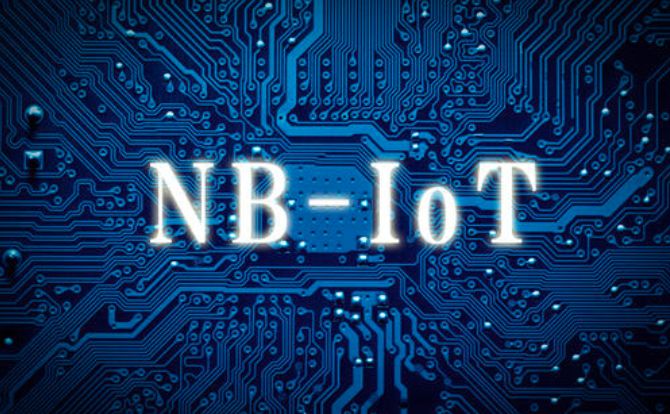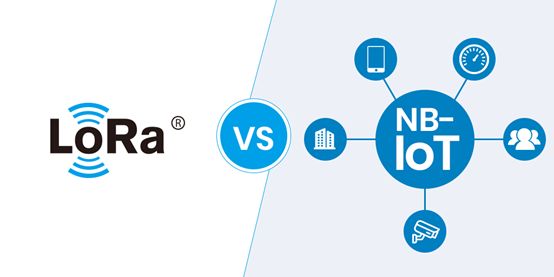

— Blogs —
—Products—
 Consumer hotline +8618073152920
Consumer hotline +8618073152920 WhatsApp:+8615367865107
Address:Room 102, District D, Houhu Industrial Park, Yuelu District, Changsha City, Hunan Province, China
Product knowledge
Time:2021-12-27 21:36:05 Popularity:1711
Detailed explanation of nb-iot network architecture
NB-IoT (Narrowband Internet of Thing) uses ultra-narrowband, repeated transmission, streamlined network protocols and other designs to sacrifice a certain rate, delay, and mobility performance to obtain the carrying capacity for LWPA Internet of Things. As a new narrowband cellular communication LPWAN (Low Power Wide Area Network) solution, NB-IoT will bring huge changes and innovations to the Internet of Things industry.
The six main application scenarios of NB-IoT technology are precisely those scenarios that are difficult to support by existing mobile communications, including scenarios such as location tracking, environmental monitoring, smart parking, remote meter reading, agriculture and animal husbandry. Market research company Machina predicts that NB-IoT will cover 25% of IoT connections in the future.

Nb-iot network architecture detailed explanation
1) NB-IoT terminal: connect to the base station through the air interface.
2) eNodeB: Mainly responsible for air interface access processing, cell management and other related functions, and connect to the IoT core network through the S1-lite interface, and forward non-access layer data to higher-level network elements for processing. It should be noted here that NB-IoT can be networked independently or integrated with EUTRAN (As mentioned when talking about duplex mode, NB can only support FDD, so here must be integrated with FDD).
3) IoT core network: assumes the function of interacting with the terminal's non-access layer, and forwards IoT business-related data to the IoT platform for processing. In the same way, NB can be independently networked here, or the core network can be shared with LTE.
4) IoT platform: gathers IoT data obtained from various access networks, and forwards them to corresponding business applications for processing according to different types.
5) Application server: It is the final gathering point of IoT data, and performs data processing and other operations according to the needs of customers.

The advantages of NB-IoT architecture
1, strong link
In the case of the same base station, NB-IoT can provide 50-100 times the number of accesses than existing wireless technologies. A sector can support 100,000 connections, support low latency sensitivity, low device power consumption and optimized network architecture.
2, wide coverage
NB-IoT has strong indoor and basement coverage. Compared with LTE, the gain is increased by 20dB, which is equivalent to an increase of 100 times the coverage area capacity. Not only can it meet the wide coverage requirements in rural areas, but it is also suitable for applications that require deep coverage such as factories, underground garages, and manhole covers. Take manhole cover monitoring as an example. In the past, the GPRS method required an antenna to be extended, and the vehicle traffic was easily damaged. However, as long as NB-IoT is properly deployed, this problem can be solved. There are solutions for monitoring, and equipment and solutions are provided for multiple cities.
3, low power consumption
Low power consumption is an important indicator requirement for IoT applications, especially for equipment and occasions where batteries cannot be replaced frequently, such as various sensing and monitoring equipment placed in remote areas of high mountains and wilderness, and power and voltage monitoring equipment. It may be like a smart phone that is charged once a day, so a battery life of several years is the most essential requirement. NB-IoT focuses on small data volume and low-rate applications, so the power consumption of NB-IoT devices can be very small, and the battery life of the device can be greatly increased from the past few months to several years.
4, low cost
Compared with LoRa, NB-IoT does not need to rebuild the network, and the radio frequency and antenna are basically multiplexed. Taking China Mobile as an example, there is a relatively wide frequency band in 900MHZ, and only a part of the 2G frequency band needs to be cleared, and LTE and NB-IoT can be deployed directly at the same time. Low speed, low power consumption, and low bandwidth also bring low-cost advantages to NB-IoT chips and modules. The expected price of the module will not exceed US$5, and the current module price of the center is 36 yuan including tax.
NB-IOT architecture
CoAP (Constrained Application Protocol) is a protocol specially designed by IETF for restricted application environments. It is similar in function to HTTP, but is lighter and more efficient, and is suitable for NB-IoT terminals.
The UE directly communicates with the IoT platform or M2M APP Server through the CoAP protocol to carry application layer data. When the M2M APP server supports the CoAP protocol, the service data can not pass through the IoT platform. The DTLS protocol is optional and supports when end-to-end security is required.
(Low Power WideArea) is an IoT application with low bandwidth, low power consumption, long-distance communication, wide coverage, and massive connection requirements. It is an IoT technology suitable for deployment by operators, including NB-IOT, LoRa, and Sigfox And other technologies. NB-IOT is led by Huawei and has become a 3GPP standard LPWA technology.
Prev:Functions of 4G Industrial Gateway
Next:What are the vertical application scenarios suitable for NB-IoT?
Related recommendations
Sensors & Weather Stations Catalog
Agriculture Sensors and Weather Stations Catalog-NiuBoL.pdf
Weather Stations Catalog-NiuBoL.pdf
Related products
 Combined air temperature and relative humidity sensor
Combined air temperature and relative humidity sensor Soil Moisture Temperature sensor for irrigation
Soil Moisture Temperature sensor for irrigation Soil pH sensor RS485 soil Testing instrument soil ph meter for agriculture
Soil pH sensor RS485 soil Testing instrument soil ph meter for agriculture Wind Speed sensor Output Modbus/RS485/Analog/0-5V/4-20mA
Wind Speed sensor Output Modbus/RS485/Analog/0-5V/4-20mA Tipping bucket rain gauge for weather monitoring auto rainfall sensor RS485/Outdoor/stainless steel
Tipping bucket rain gauge for weather monitoring auto rainfall sensor RS485/Outdoor/stainless steel Pyranometer Solar Radiation Sensor 4-20mA/RS485
Pyranometer Solar Radiation Sensor 4-20mA/RS485
Screenshot, WhatsApp to identify the QR code
WhatsApp number:+8615367865107
(Click on WhatsApp to copy and add friends)